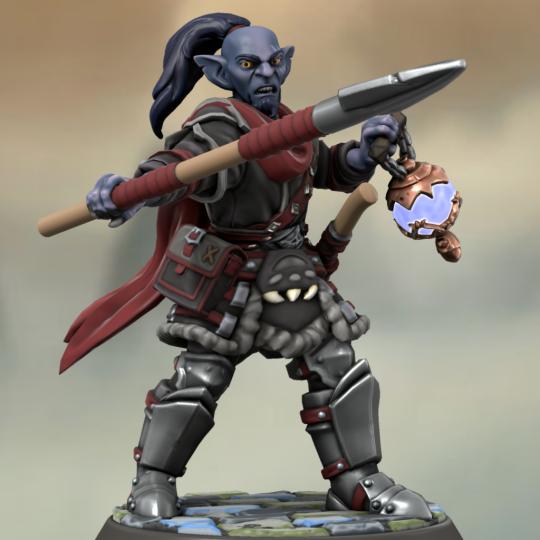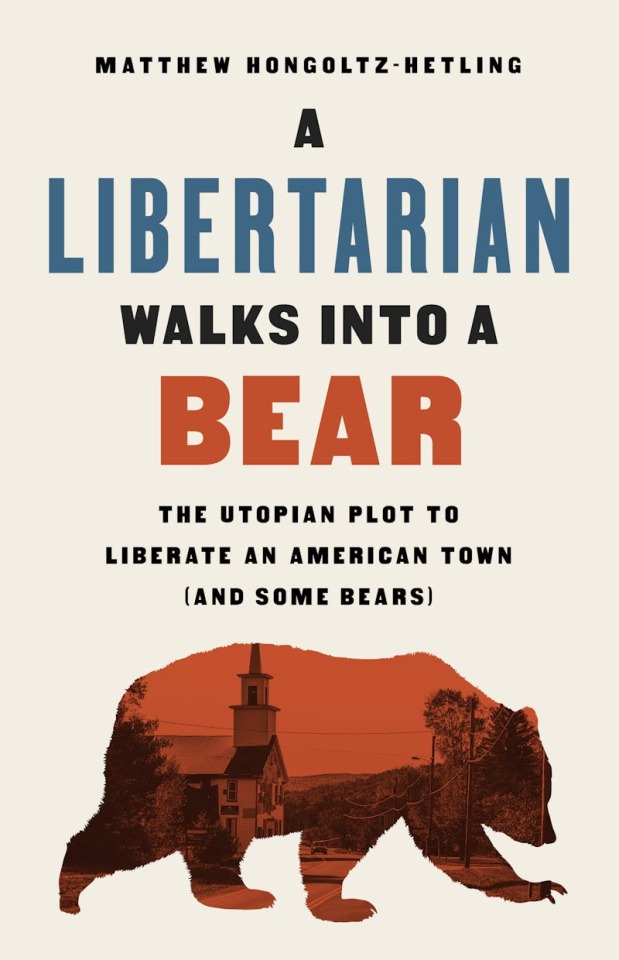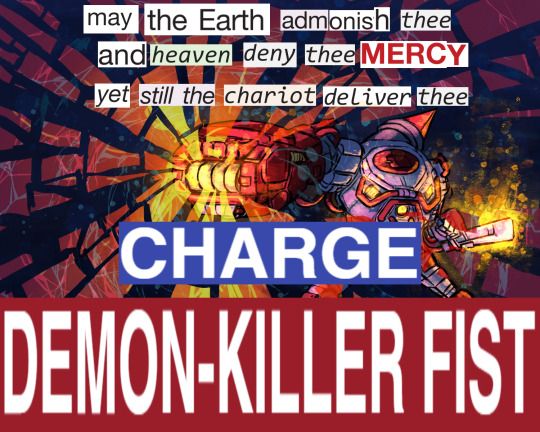#Set 288
Explore tagged Tumblr posts
Text





Dice Set #288: Ceanothus
#Set 288#dice#dice addiction#my collection#DnD#D&D#dice set#my dice sets#corvidcore#This is the paired set of my likely next character#Y'know assuming that Pathfinder campaign that's been in a holding pattern for like half a year ever starts#I'll be playing Nilzom the Hobgoblin Thaumaturge#(I don't have near the familiarity with Pathfinder as I do with D&D)#none of us really do but that's why we're trying it out#given Hasbro's shenanigans#I'm still likely getting the PHB update because the content updates I have heard about sound good/interesting to me#but we'll see how it all pans out after this campaign#I am excited for different weapons having different effects/abilities#both in pathfinder and the updated D&D
23 notes
·
View notes
Text



"My people know little fear, but that makes them arrogant. There are threats out there that cannot be easily overcome through strength and numbers alone. Though they may laugh at ritual and shun magic, these techniques will make it easier to cut down those foes of a supernatural or magical nature."
Nilzom
(He/Him)
Elfbane Hobgoblin Thaumaturge
Night Guard Background
Alternatively:
Hobgoblin Blood Hunter, Order of the Ghostslayer
Lawful Neutral
City Watch Background
Pathfinder Hobgoblin Lore Compliant Version (ie: Hairless)


(I actually don't dislike this look for him as much as I thought I might, but I'll still probably stick with the ponytail and goatee unless people are real sticklers for it)
Dice Set #288 - Ceanothus





--------------------------------------------
So, yeah, it's been a hot minute, eh? Such is the nature of hyperfixation, it flips wildly between things sometimes. Lately, it's been focused on various video games, but also especially jigsaw puzzles (both physical and digital). I'll try to get myself to do some more character updates/creation at some point here, but that will still require that needle to flip back over a little. It did feel pretty fun and natural to hop back into HeroForge to make this new character, though, which is always nice.
At any rate, in the meantime, my gaming groups' lives seem to have calmed down a little bit, and we figure we're just going to start up a new campaign and get a couple new folks in as well. And we're giving Pathfinder a go this time around, as you might imagine, with Nilzom being a Pathfinder-focused character. Of course, I've got the D&D roughest equivalent penciled in for him as well. I know that D&D Hobs are more likely to be orange-red skinned as opposed to the Pathfinder's blue-grey skinned. But, eh, he can fit into either setting. Including having some hair. As a treat.
#Nilzom#Dice Set 288#Pathfinder#Hobgoblin#Thaumaturge#DnD#D&D#Blood Hunter#Order of the Ghostslayer#Hero Forge
6 notes
·
View notes
Text


. ݁₊ ⊹ . ݁ ⟡ ݁ . ⊹ ₊ ݁.12 DAYS OF CHRISTMAS, DAY 6: 6 GEESE A LAYING. ݁₊ ⊹ . ݁ ⟡ ݁ . ⊹ ₊ ݁.
Okay, the thought process was: geese a laying > geese > mother goose > nursery rhymes > Nurseries. You see the vision, right?...Good! Day 6 of [ELITISIM'S 12 DAYS OF CHRISTMAS ADVENT EXTRAVAGANZA!] is a conversion of @myshunosun's lullaby nursery set: 6 items for your newest bouncing bundle of joy to enjoy this holiday season!
Information:
None of this is my original work! All mesh and texture credit goes to the original creator, @myshunosun!
All objects are functional.
Low-poly meshes: all meshes are less than 1.5k with most being under 500!
** WARNING**: The Changing Tables require either the [Baby Changing Station from the EA Store] or [Baby Table file from @aroundthesims] to work properly! Rocking Chairs are NOT base game compatible and require Supernatural to function! [they might work with Store Content rocking Chairs but idk i'm not sure]
**WARNING 2:** Crib works perfectly for toddlers, but infants float a little when placed.
Polycounts, in game prices, and color channel breakdown under the cut!
[DOWNLOAD MERGED]
[DOWNLOAD UNMERGED]
Tagging: @pis3update, @xto3conversionsfinds, @kpccfinds,
Lullabye Nursery Crib : 288 Polys| 4 channels | Found in Kids under Furniture | §165|
Lullabye Nursery Changing Table : 178 Polys| 2 channels | Found in Kids under Furniture| §75|
Lullabye Nursery Dresser : 723 Polys| 4 channels | Found in Storage under Dressers| §75|
Lullabye Nursery Toy Chest : 204 Polys| 3 channels | Found in Comfort under Beds| §50|
Lullabye Nursery Nightstand : 354 Polys| 4 channels | Found in surfaces under Endtables| §80|
Lullabye Nursery Rocking Chair : 1254 Polys| 4 channels | Found in Comfort under Living Chairs| §80|
#ts3cc#s3cc#ts3 cc#4t3#sims 3 cc#ts3 download#ts3#s3 cc#ts3 dl#s3 dl#sims 3#ts3 objects#[MINE]#ELITISIM'S 12 DAYS OF CHRISTMAS ADVENT EXTRAVAGANZA!#Today is very low-key just one cute lil set nothing too crazy#Consider this a chill day before it ramps TF up cuz the next 6 days are NUTS.
420 notes
·
View notes
Text
Leila K featuring Papa Dee - Rude Boy 1996
Laila El Khalifi is a Eurodance singer and rapper of Moroccan descent, from Gothenburg, Sweden. Together with Rob'n'Raz she had her first hit in 1989 with the song "Got to Get". During the first years of her career she had many chart-topping hits and her music was played all over Europe. She broke up with Rob'n'Raz and went on her own to Ibiza, where she set up concerts on her own. Her solo career started in 1991 with the single "Time".
Daniel Wahlgren is a Swedish-Ghanaian rapper, also from Gothenburg, Sweden. He debuted in 1988 with the single "Funky Raggamuffin/Let the Music Play". His songs have been featured in several feature films including Predator 2. Due to his prolific yet flexible imprint he has enjoyed a successful career as one of Sweden's most sought after voice artists dubbing cartoons and movies alike.
"Rude Boy" was written by Leila K, Papa Dee, Denniz PoP, Max Martin and Herbie Chrichlow, produced by Denniz PoP and Max Martin, and it peaked at number 8 in Finland and 29 in Sweden. The album Manic Panic peaked at number 4 on the Finnish charts and 17 on the Swedish charts. The artist Darude, known for the song "Sandstorm", took his name from "Rude Boy".
"Rude Boy" received a total of 71,3% yes votes!
youtube
683 notes
·
View notes
Text
archduke! leona kingscholar

archduke!leona kingscholar, who is granted the title and a duchy comprising of the outlands of the sunset savannah to rule, who at first rejects the title thinking it a trap. after weeks of falena and the queen convincing him it is not, leona is formally crowned the archduke of the sunset savannah, a king in his own right. the only catch? leona must present records of finance and laws passed once every six months.
archduke!leona kingscholar, who modernises and uplifts the "boonies", as ruggie calls the place, with the help of former savanaclaw students whom he hires and pays fair wages to, allowing the younger ones to freely pursue internships under him and their other seniors and even setting up schools and colleges allied to a central university in sunrise city.
archduke!leona kingscholar, who isn't even considered a ruler by the people he rules over, instead considered a friend, a son, a grandson, a brother, an uncle. in the evenings when the sun hangs low in the sky and you can see the bare outline of the moon, leona can be found playing spelldrive with the kids while some neighbourhood preteens fight over his guitar, their mothers and grandmothers apologising for damage done while he chuckles.
archduke!leona kingscholar, who welcomes his son and heir in a place filled with love and praise for his efforts, the citizens of his duchy always open to lending him a hand when the going gets tough. "you helped raised our boys, even though you didn't have to," the mothers start as they hug their future king gently, the child pawing at their breasts hungrily, mewling as his father chuckles, slightly embarrassed. "now it's our turn to help you."

this is one of my fave aus i've ever written for leona, second only to my more angsty immortal-bounty-hunter-leona au. bringing this back bc RUGGIE'S DREAM???? HELLO???? I WROTE THIS IN 2023 btw || 288 words, a repost from my now-deleted account @.ameleii :) || part 2 @puowei, @aivy-saur, @glidiaxoxo, @fungifanart, @nemisisnemi @loser-jpg, @bunnwich
#twst#twisted wonderland#twisted wonderland x reader#twst x reader#leona kingscholar#twst leona#leona kingscholar x reader#leona x reader#leona x yuu#leona twst
399 notes
·
View notes
Text
I finally published the project for my dice roll scarf that went viral last month. If you love dice games, you'll enjoy knitting this pattern.

The color work in this project is determined by an algorithm, a set of rules that determine the final outcome. There isn't an exact set of instructions for this project. Instead, the knitter uses four 10-sided dice or a random number generator to pick the length of the colorwork in each row.


The result is a staggered stripe sequence along the edge of the shawl. There are trillions of unique outcomes, so no two projects turn out exactly alike. The pattern uses about 500 yards of yarn in total, but the amount of each color that you'll need is randomly determined. Before publishing, I wanted to find out the minimum and maximum amount of each color required to make the project and the probability of each outcome.

The knowledge needed to calculate the yardage was a bit beyond my skill level, but my friend Mary W. Martin helped me gather this info. I used an online probability calculator to find out the probability of each unique stitch count. The results are slightly different depending on whether you use four 10-sided dice (blue) or pick a random number (yellow), but 99% of all possible results fall within a very small range.

It was an interesting little tangent, but not hugely important to the actual knitting pattern. I can, however, confidently say there is a >99.9% chance that you'll need a 2nd skein of the main color. If you want to know more about the math, you should check out my project notes on Ravelry.
The thick and thin striped colorwork is created with a super simple "long stitch" technique. The pattern looks great in fluffy mohair or contrasting colors of basic wool and the instructions include some basic tips for substituting yarns or changing the gauge.


Finished Size: 18 x 68” (46 x 172 cm) rectangular wrap.
Yarn: Approx. 315 yards (288 m) of MC and approx. 264 yards (241 m) of CC. Yardage may vary, see notes on yardage below and yardage chart in photos.
• Main Color (2 skeins) - JMR Studio Worsted Weight Mohair, 245 yards (225 m) per 4 oz; 78% Mohair, 13% Wool, 9% Nylon.
• Contrast Color (1 skein each, both yarns held together) - JMR Studio Fingering Weight Mohair, 320 yards (293 m) per 100g; 63% Silk, 23% Kid Mohair, 11% Nylon, 3% Polyester Held with Lavender Lune Yarn Co. Suri Alpaca, 328 yards (300 m) per 50g; 74% Suri Alpaca, 26% Silk.
Yardage: The amount of each color used for this pattern fluctuates based on the random numbers used to determine the stitch pattern. MC uses approx. 233 to 315 yards (213 to 288m) and CC uses approx. 182 to 264 yards (166 to 241m). 99% of possible results fall within a much smaller range. The Yardage Chart shows the distribution of all potential yardage outcomes.
Needles: Size 8 (5 mm) straight needles, or size needed to obtain gauge. NOTE: Straight needles work best with long stitches. Circular needles with a thin cord allow the long stitches to tighten and stretch, making them harder to manipulate.
Gauge: 12 sts x 14 rows = 4 x 4” (10 x 10 cm) square in pattern.
Other Materials: 10 sided die or random number generator, stitch marker, scale, tapestry needle.
Generating numbers: In my sample, I used four ten-sided dice (D10) to choose a number between 4 and 40 sts. If you don't have dice, you can use an online app like RANDOM.org to generate your numbers. If you follow this link, you'll get a list of 63 integers between 4 and 40. NOTE: Each time you visit the link or refresh the page, the list changes. You can also just choose numbers as you knit.
Pattern is available on my website and on Ravelry.
831 notes
·
View notes
Text

4t2 Toddler Potties! The "Baby's First Chamber Pot" was part of LordCrump's and my EP15 For Rent Conversion pack so if you already have that, delete this one as they're the same. I'm just uploading it again here to go with this set. These are all functional :)
Download - SFS | MF
details below the cut:
Left to Right:
Practical Potty 6 recolors | 75 simoleons | 596 poly
EP13 If It Ain't Broke... Potty 10 recolors | 200 simoleons | 492 poly
EP13 Potty-Time Buddy 6 recolors | 105 simoleons | 464 poly
EP15 Baby's First Chamber Pot 9 recolors | 70 simoleons | 288 poly
Refined Potty Chair 8 recolors | 200 simoleons | 364 poly
Monster Party Partner 5 recolors | 125 simoleons | 558 poly
#4t2#s2cc#ts2cc#sims 2 cc#sims 2 download#ts2 download#download#4t2cc#the sims 2 cc#4t2 conversion#sims 4t2#ts2 custom content#sims 2 custom content#ts2 cc#dl:buy#dl:obj
760 notes
·
View notes
Note
Hear me out... SCP!141 with SCP288 (the marriage rings)
:>
GOD. YEAH.
Note from O5 regarding SCP-288 tests:
In an effort to make the members of SCP-141 more docile each male will be subject to no more than an hour to observe the effects of SCP-288 on their personality. It is hoped that SCP-288's memetic effect might neutralize their more dangerous impulses. I understand that this has raised some ethical questions with our more psychologically attuned staff. To which I say: proceed with the tests.
Testing Log, SCP-288:
Subject: SCP-141-A Research Note: Seems only right to start with the ring leader. Results: SCP-141-A is exposed to SCP-141 and brought into standard human containment unit(HCU) which has been outfitted to resemble a small apartment with simple luxuries. Dr. ⬛⬛⬛⬛⬛ offers him the ring box, he chuckles but takes it. "Sweetheart, ya shouldn't 'ave." He opens the box and inspects the rings. "matching set, cute." "If you would wear the-" Dr. ⬛⬛⬛⬛⬛ stops, frowns. "The men's ring?" SCP-141-A supplies. Dr. ⬛⬛⬛⬛⬛ nods, pressing the heel of her hand to her temple as SCP-141-A removes the men's ring and slips it onto his finger. SCP-141-A spends the next several minutes observing Dr. ⬛⬛⬛⬛⬛ silently. He tips his head then tugs a box of cigarettes from his pocket and pulls one free with his teeth. Dr. ⬛⬛⬛⬛⬛ takes a seat in the armchair and SCP-141-A pulls her back to standing with a hand under her elbow. "Ah, ah sweetheart, the couch." He sets her on the provided couch and searches his pockets for a lighter. "Darling-" He tips his head again, taking the cigarette from between his lips and holding it out to her. Dr. ⬛⬛⬛⬛⬛ takes a lighter from her pocket and lights the cigarette for him. "Those things give me a headache." Dr. ⬛⬛⬛⬛⬛ sighs. "Man upstairs won't shell for cigars." SCP-141-A takes a seat next to Dr. ⬛⬛⬛⬛⬛, resting his hand on her knee. The two sit in silence as Dr. ⬛⬛⬛⬛⬛ rubs her forehead with her fingers. SCP-141-A's hand creeps up her thigh in the quiet. "You know-" SCP-141-A exhales smoke, Dr. ⬛⬛⬛⬛⬛ winces, her hand drops to his on her thigh. "You're hurting me." "-Not right for you to watch a man and his wife." [DATA CORRUPTED]
Testing Notes:
Computers in observation room C ⬛⬛⬛⬛⬛⬛ due to SCP-141-A's ⬛⬛⬛⬛, security personnel dispatched to HCU ⬛⬛ after video feed was interrupted and the cameras were ⬛⬛⬛⬛⬛. Security was able to intervene before SCP-141-A could [Data redacted]. Recommending Dr. ⬛⬛⬛⬛⬛ for immediate psychological examination.
Note from Dr. ⬛⬛⬛⬛⬛:
I'm fine. Testing may resume.
-
Testing Log, SCP-288:
Subject: SCP-141-B Research Note: I thought we weren't doing any more tests on this guy? Note: Testing will continue. Results: SCP-141-B is exposed to SCP-141 and brought into standard HCU outfited to resemble a small apartment with simple luxuries. The ring box is left on the table with instructions. SCP-141-B places men's ring on his finger, and D-class personnel is let into the room. Announcement made informing SCP-141-B of "wife." SCP-141-B displays characteristics in line with typical SCP-288-2 exposure including: deference to authority, "doting" behavior, and discussions of family planning. "Wife" displays rapid behavior changes in line with SCP-288-1 exposure, making comments on the state of the house and attempting to use the kitchen to bake for SCP-141-B. Test halted after SCP-141-B's attempt to [redacted]. D-class "Wife" displays advanced cognitohazardous effects, and actively resisted staff attempts to neutralize memetic damage. Suffered severe seizures for ⬛⬛ hours before passing. Time of death ⬛⬛:⬛⬛PM. SCP-141-B unresponsive to questions, still smiling ⬛⬛⬛ hours post testing.
-
Testing Log, SCP-288:
Subject: SCP-141-C Research Note: I'm not going in there after what he did. O5 Note: Yes you are. Results: Immediately after placing SCP-288-2 on his own finger SCP-141-C goes after Dr. ⬛⬛⬛⬛, after several minutes of struggle Dr. ⬛⬛⬛⬛ is wrestled to the ground and SCP-288-1 is forced onto her finger. SCP security staff prevented from intervening. SCP-141-C holds Dr. ⬛⬛⬛⬛ against the ground with her arm twisted behind her back for several minutes, making her repeat bible verses regarding marriage and "wifely duties." He only lets her up upon completion and apologizes for punishing her. Dr. ⬛⬛⬛⬛ smiles and nods along to his apology. Dr. ⬛⬛⬛⬛ is kept on her knees beside the couch. Testing stopped when SCP-141-C removed his [redacted] from his trousers and told her to "open." Security staff were able to safely remove SCP-288-1 from Dr. ⬛⬛⬛⬛'s finger despite interference from SCP-141-C.
Testing Notes:
Recommending Dr. ⬛⬛⬛⬛ for immediate psychological examination, and mental health leave. Denied
-
Testing Log, SCP-288:
Subject: SCP-141-D Research notes: audio logs and transcriptions pending review, staff may be editorializing these. O5 Notes: Someone muzzle the psych please. Results: SCP-141-D is exposed to SCP-141 and led into standard HCU furnished like small apartment with simple luxuries. His former psychiatrist Dr. ⬛⬛⬛⬛ is handcuffed to the arm chair, she tugs at her restraints in a panic as SCP-141-D takes his seat on the couch. SCP-141-D reads instructions next to ring box and removes SCP-288-2, and places it on his finger. After a moment he steps around Dr.⬛⬛⬛⬛ in order to fiddle with the handcuffs. "Calm down sweet'eart, tryin' ta get ya outta the damn things." (Voice can be heard over receiver) Dr. ⬛⬛⬛⬛'s struggling only gets worse. SCP-141-D grabs her by the throat and holds her against the back of the armchair. Dr. ⬛⬛⬛⬛ appears to be on the verge of hyperventilation. "Come on." SCP-141-D breaks the chain on one of her cuffs and Dr. ⬛⬛⬛⬛ smacks him across the face. SCP-141-D's grip on her tightens and quickly loosens, anger there and gone only long enough for Dr. ⬛⬛⬛⬛ to cower. "Not gonna hurt ya," [researches described voice as "gentling" pending review] "wouldn't hurt ya, calm down f'r me love." SCP-141-D spends the remaining hour, holding Dr. ⬛⬛⬛⬛ in a bear hug as he sits in the armchair and she thrashes against his hold. SCP-141-D sustains multiple bite injuries and several headbutts, leading to what was assumed to be a broken nose. Upon examination no injuries were found.
SCP-141-D Note:
Don't you ever put that on me again. Like puttin' a fightin' dog in a jumper. I'll kill 'er next time.
Site ⬛⬛ Memo:
Dr. ⬛⬛⬛⬛ requesting immediate termination of employment. Denied
#cod x reader#x reader#x oc#cod x oc#simon ghost riley#john soap mactavish#kyle gaz garrick#captain john price#scp au#scp!tf 141#A = Price#B = Gaz#C = Soap#D = Ghost
286 notes
·
View notes
Text

CAS Teeth
M/F All life stages
All LODs
430 tris (Toddler/Child/Teen-Elder), 288 tris (Infant)
A set of catlike teeth for all life stages, because the vampire fangs weren't quite doing it for me. Disabled for random, custom thumbnails.
Download:
SFS | Patreon

127 notes
·
View notes
Text
Fic In A Box 2024

Schedule
August 9-16: Nominations Pre-Gaming (participants can load tags from last year’s tagset into this tagset)
August 17: Tag Nominations Open
August 24: Tag Nominations Close
August 25-26: Nominations Cleanup
August 27: Signups Open
September 1: Swap requests open
September 7: Signups Close
September 10: Assignments Out By This Date
September 11: Swap requests close
October 20: Assignments Due
October 27: First Extension Due Date
November 3: Final Extension Due Date
November 10: Last Day To Submit Makeup Assignments
November 16 28: Work Reveals
November 30 December 12: Creator Reveals
All times 11:59pm Eastern
What is Fic In A Box
A gift exchange is an event where participants create fanworks to gift to each other. Fic In A Box is a fanwork exchange with a large minimum gifting requirement and several unique features. Gifts can include fic, art, audio, video— and much much more.
How It Works/The Nitty-Gritty:
All participants in Fic In A Box are requesting 10,000 words of fanfiction by default, but can opt in to other mediums to give their gifter options. Mediums can include writing structure things like "in-world rpf" for your gift, or include creative formats as far away from fic as different types of art, knitting patterns, logic puzzles, and so on. There were 288 mediums to choose from last year, and we add more every year.
For mediums other than the written word, pretty much any medium will be accepted, as long as it can be digitized for delivery and we can agree on a clear and easily checked equivalent to 1k of written fic. Participants who primarily work in non-writing mediums are very welcome and will get specially matched (as long as they give the mods a heads-up) so they'll have an assignment they can complete. If your art form is fannish cross-stitch? We'd love to have you join us.
Participants have the option to split the 10k words (or equivalent in an opted-into medium) that they owe between several separate works (say, one fic of 3k and a another of 7k) to reach 10k total. The minimum word count per work is 1k by default, but lower wordcount works will count if your recipient has opted into receiving them. (Drabble is a medium that can be opted into!) And initial assignments are 10k for one person, but at the start of the exchange the mods run Swaps which will give you the chance to split that 10k into multiple shorter assignments for multiple recipients!
So when it comes time to turn in gifts, you might turn in 3k worth of art, 4k in fic, and 3k in typesetting a fic (10k total), and then you receive 8k of fic and 2k of map design (10k total). Last year 265 people signed up, and we exchanged 993 gifts at the end of the creation period, everything from fic to reddit posts to logic puzzles to museum catalogues to CYOA stories to colouring pages!
If you cannot complete the full 10k (or other medium equivalent) but are still able to post one or more smaller, complete works, you can default on just the remaining wordcount. You will then be guaranteed (via finding a back up gifter-- "pinch hitting"-- if necessary) a gift equivalent to the amount you were able to submit (rounded down to the nearest 1k). There are also options to "earn back" guaranteed minimum amount by taking pinch hits or completing your original assignment.
Questions?
For more information about Medium rulesets, signing up, nominations of fandoms, relationships, or medium forms, swaps, or much more (questions about how pinch hits work? we have documentation about that), check out the dreamwidth blog!
If you have questions, feel free to ask them here, check the dreamwidth blog for much more documentation, email the mods, or join our discord server. The discord server has a lot of experienced participants happy to answer questions, and you are also welcome to join just to hang out!
Note: you must be 18 or older to join FIAB.
Links
Email: [email protected]
Ao3 Collection (sign up here once signups open)
Tag Set
Dreamwidth Blog
Discord (includes question channel)
Current Pinch Hits
182 notes
·
View notes
Text

hey, i've just queued up a mobile Cookie Clicker update! it should make its way to your device automatically within the next few hours. this is a maintenance update to make the game available to newer Android devices, but it also includes partial progress on the alpha version, so feel free to try that out too if you'd like (it uses a different save slot than the live version)! there's some new features ported over from the browser game but many of them are still only half-implemented (ie. you'll find the dragon and Santa, but won't be able to do much of anything with them just yet; seasons are in, but things like reindeer are still missing etc). notably, the alpha version now features an additional 288 upgrades along with the 4 missing buildings, plus a good amount of new achievements.
i'll keep working on the alpha until i'm satisfied with the feature set. thank you for your patience!
610 notes
·
View notes
Text

A Libertarian Walks Into a Bear: The Utopian Plot to Liberate an American Town (and Some Bears)
PublicAffairs, 288 pp., $28.00
But don’t worry—it almost never comes to this. As one park service PSA noted this summer, bears “usually just want to be left alone. Don’t we all?” In other words, if you encounter a black bear, try to look big, back slowly away, and trust in the creature’s inner libertarian. Unless, that is, the bear in question hails from certain wilds of western New Hampshire. Because, as Matthew Hongoltz-Hetling’s new book suggests, that unfortunate animal may have a far more aggressive disposition, and relate to libertarianism first and foremost as a flavor of human cuisine.
Hongoltz-Hetling is an accomplished journalist based in Vermont, a Pulitzer nominee and George Polk Award winner. A Libertarian Walks Into a Bear: The Utopian Plot to Liberate an American Town (and Some Bears) sees him traversing rural New England as he reconstructs a remarkable, and remarkably strange, episode in recent history. This is the so-called Free Town Project, a venture wherein a group of libertarian activists attempted to take over a tiny New Hampshire town, Grafton, and transform it into a haven for libertarian ideals—part social experiment, part beacon to the faithful, Galt’s Gulch meets the New Jerusalem. These people had found one another largely over the internet, posting manifestos and engaging in utopian daydreaming on online message boards. While their various platforms and bugbears were inevitably idiosyncratic, certain beliefs united them: that the radical freedom of markets and the marketplace of ideas was an unalloyed good; that “statism” in the form of government interference (above all, taxes) was irredeemably bad. Left alone, they believed, free individuals would thrive and self-regulate, thanks to the sheer force of “logic,” “reason,” and efficiency. For inspirations, they drew upon precedents from fiction (Ayn Rand loomed large) as well as from real life, most notably a series of micro-nation projects ventured in the Pacific and Caribbean during the 1970s and 1980s.
None of those micro-nations, it should be observed, panned out, and things in New Hampshire don’t bode well either—especially when the humans collide with a newly brazen population of bears, themselves just “working to create their own utopia,” property lines and market logic be damned. The resulting narrative is simultaneously hilarious, poignant, and deeply unsettling. Sigmund Freud once described the value of civilization, with all its “discontents,” as a compromise product, the best that can be expected from mitigating human vulnerability to “indifferent nature” on one hand and our vulnerability to one another on the other. Hongoltz-Hetling presents, in microcosm, a case study in how a politics that fetishizes the pursuit of “freedom,” both individual and economic, is in fact a recipe for impoverishment and supercharged vulnerability on both fronts at once. In a United States wracked by virus, mounting climate change, and ruthless corporate pillaging and governmental deregulation, the lessons from one tiny New Hampshire town are stark indeed.
“In a country known for fussy states with streaks of independence,” Hongoltz-Hetling observes, “New Hampshire is among the fussiest and the streakiest.” New Hampshire is, after all, the Live Free or Die state, imposing neither an income nor a sales tax, and boasting, among other things, the highest per capita rate of machine gun ownership. In the case of Grafton, the history of Living Free—so to speak—has deep roots. The town’s Colonial-era settlers started out by ignoring “centuries of traditional Abenaki law by purchasing land from founding father John Hancock and other speculators.” Next, they ran off Royalist law enforcement, come to collect lumber for the king, and soon discovered their most enduring pursuit: the avoidance of taxes. As early as 1777, Grafton’s citizens were asking their government to be spared taxes and, when they were not, just stopped paying them.
Nearly two and a half centuries later, Grafton has become something of a magnet for seekers and quirky types, from adherents of the Unification Church of the Reverend Sun Myung Moon to hippie burnouts and more. Particularly important for the story is one John Babiarz, a software designer with a Krusty the Klown laugh, who decamped from Big-Government-Friendly Connecticut in the 1990s to homestead in New Hampshire with his equally freedom-loving wife, Rosalie. Entering a sylvan world that was, Hongoltz-Hetling writes, “almost as if they had driven through a time warp and into New England’s revolutionary days, when freedom outweighed fealty and trees outnumbered taxes,” the two built a new life for themselves, with John eventually coming to head Grafton’s volunteer fire department (which he describes as a “mutual aid” venture) and running for governor on the libertarian ticket.
Although John’s bids for high office failed, his ambitions remained undimmed, and in 2004 he and Rosalie connected with a small group of libertarian activists. Might not Grafton, with its lack of zoning laws and low levels of civic participation, be the perfect place to create an intentional community based on Logic and Free Market Principles? After all, in a town with fewer than 800 registered voters, and plenty of property for sale, it would not take much for a committed group of transplants to establish a foothold, and then win dominance of municipal governance. And so the Free Town Project began. The libertarians expected to be greeted as liberators, but from the first town meeting, they faced the inconvenient reality that many of Grafton’s presumably freedom-loving citizens saw them as outsiders first, and compatriots second—if at all. Tensions flared further when a little Googling revealed what “freedom” entailed for some of the new colonists. One of the original masterminds of the plan, a certain Larry Pendarvis, had written of his intention to create a space honoring the freedom to “traffic organs, the right to hold duels, and the God-given, underappreciated right to organize so-called bum fights.” He had also bemoaned the persecution of the “victimless crime” that is “consensual cannibalism.” (“Logic is a strange thing,” observes Hongoltz-Hetling.)
While Pendarvis eventually had to take his mail-order Filipina bride business and dreams of municipal takeovers elsewhere (read: Texas), his comrades in the Free Town Project remained undeterred. Soon, they convinced themselves that, evidence and reactions to Pendarvis notwithstanding, the Project must actually enjoy the support of a silent majority of freedom-loving Graftonites. How could it not? This was Freedom, after all. And so the libertarians keep coming, even as Babiarz himself soon came to rue the fact that “the libertarians were operating under vampire rules—the invitation to enter, once offered, could not be rescinded.” The precise numbers are hard to pin down, but ultimately the town’s population of a little more than 1,100 swelled with 200 new residents, overwhelmingly men, with very strong opinions and plenty of guns.
Hongoltz-Hetling profiles many newcomers, all of them larger-than-life, yet quite real. The people who joined the Free Town Project in its first five years were, as he describes, “free radicals”—men with “either too much money or not enough,” with either capital to burn or nothing to lose. There’s John Connell of Massachusetts, who arrived on a mission from God, liquidated his savings, and bought the historic Grafton Center Meetinghouse, transforming it into the “Peaceful Assembly Church,” an endeavor that mixed garish folk art, strange rants from its new pastor (Connell himself), and a quixotic quest to secure tax exemption while refusing to acknowledge the legitimacy of the IRS to grant it. There’s Adam Franz, a self-described anti-capitalist who set up a tent city to serve as “a planned community of survivalists,” even though no one who joined it had any real bushcraft skills. There’s Richard Angell, an anti-circumcision activist known as “Dick Angel.” And so on. As Hongoltz-Hetling makes clear, libertarianism can indeed have a certain big-tent character, especially when the scene is a new landscape of freedom-lovers making “homes out of yurts and RVs, trailers and tents, geodesic domes and shipping containers.”
If the Libertarian vision of Freedom can take many shapes and sizes, one thing is bedrock: “Busybodies” and “statists” need to stay out of the way. And so the Free Towners spent years pursuing an aggressive program of governmental takeover and delegitimation, their appetite for litigation matched only by their enthusiasm for cutting public services. They slashed the town’s already tiny yearly budget of $1 million by 30 percent, obliged the town to fight legal test case after test case, and staged absurd, standoffish encounters with the sheriff to rack up YouTube hits. Grafton was a poor town to begin with, but with tax revenue dropping even as its population expanded, things got steadily worse. Potholes multiplied, domestic disputes proliferated, violent crime spiked, and town workers started going without heat. “Despite several promising efforts,” Hongoltz-Hetling dryly notes, “a robust Randian private sector failed to emerge to replace public services.” Instead, Grafton, “a haven for miserable people,” became a town gone “feral.” Enter the bears, stage right.
Black bears, it should be stressed, are generally a pretty chill bunch. The woods of North America are home to some three-quarters of a million of them; on average, there is at most one human fatality from a black bear attack per year, even as bears and humans increasingly come into contact in expanding suburbs and on hiking trails. But tracking headlines on human-bear encounters in New England in his capacity as a regional journalist in the 2000s, Hongoltz-Hetling noticed something distressing: The black bears in Grafton were not like other black bears. Singularly “bold,” they started hanging out in yards and on patios in broad daylight. Most bears avoid loud noises; these casually ignored the efforts of Graftonites to run them off. Chickens and sheep began to disappear at alarming rates. Household pets went missing, too. One Graftonite was playing with her kittens on her lawn when a bear bounded out of the woods, grabbed two of them, and scarfed them down. Soon enough, the bears were hanging out on porches and trying to enter homes.
Combining wry description with evocative bits of scientific fact, Hongoltz-Hetling’s portrayal of the bears moves from comical if foreboding to downright terrifying. These are animals that can scent food seven times farther than a trained bloodhound, that can flip 300-pound stones with ease, and that can, when necessary, run in bursts of speed rivaling a deer’s. When the bears finally start mauling humans—attacking two women in their homes—Hongoltz-Hetling’s relation of the scenes is nightmarish. “If you look at their eyes, you understand,” one survivor tells him, “that they are completely alien to us.”
What was the deal with Grafton’s bears? Hongoltz-Hetling investigates the question at length, probing numerous hypotheses for why the creatures have become so uncharacteristically aggressive, indifferent, intelligent, and unafraid. Is it the lack of zoning, the resulting incursion into bear habitats, and the reluctance of Graftonites to pay for, let alone mandate, bear-proof garbage bins? Might the bears be deranged somehow, perhaps even disinhibited and emboldened by toxoplasmosis infections, picked up from eating trash and pet waste from said unsecured bins? There can be no definitive answer to these questions, but one thing is clear: The libertarian social experiment underway in Grafton was uniquely incapable of dealing with the problem. “Free Towners were finding that the situations that had been so easy to problem-solve in the abstract medium of message boards were difficult to resolve in person.”
Grappling with what to do about the bears, the Graftonites also wrestled with the arguments of certain libertarians who questioned whether they should do anything at all—especially since several of the town residents had taken to feeding the bears, more or less just because they could. One woman, who prudently chose to remain anonymous save for the sobriquet “Doughnut Lady,” revealed to Hongoltz-Hetling that she had taken to welcoming bears on her property for regular feasts of grain topped with sugared doughnuts. If those same bears showed up on someone else’s lawn expecting similar treatment, that wasn’t her problem. The bears, for their part, were left to navigate the mixed messages sent by humans who alternately threw firecrackers and pastries at them. Such are the paradoxes of Freedom. Some people just “don’t get the responsibility side of being libertarians,” Rosalie Babiarz tells Hongoltz-Hetling, which is certainly one way of framing the problem.
Pressed by bears from without and internecine conflicts from within, the Free Town Project began to come apart. Caught up in “pitched battles over who was living free, but free in the right way,” the libertarians descended into accusing one another of statism, leaving individuals and groups to do the best (or worst) they could. Some kept feeding the bears, some built traps, others holed up in their homes, and still others went everywhere toting increasingly larger-caliber handguns. After one particularly vicious attack, a shadowy posse formed and shot more than a dozen bears in their dens. This effort, which was thoroughly illegal, merely put a dent in the population; soon enough, the bears were back in force.
Meanwhile, the dreams of numerous libertarians came to ends variously dramatic and quiet. A real estate development venture known as Grafton Gulch, in homage to the dissident enclave in Ayn Rand’s Atlas Shrugged, went belly-up. After losing a last-ditch effort to secure tax exemption, a financially ruined Connell found himself unable to keep the heat on at the Meetinghouse; in the midst of a brutal winter, he waxed apocalyptic and then died in a fire. Franz quit his survivalist commune, which soon walled itself off into a prisonlike compound, the better to enjoy freedom. And John Babiarz, the erstwhile inaugurator of the Project, became the target of relentless vilification by his former ideological cohorts, who did not appreciate his refusal to let them enjoy unsecured blazes on high-wildfire–risk afternoons. When another, higher-profile libertarian social engineering enterprise, the Free State Project, received national attention by promoting a mass influx to New Hampshire in general (as opposed to just Grafton), the Free Town Project’s fate was sealed. Grafton became “just another town in a state with many options,” options that did not have the same problem with bears.
Or at least—not yet. Statewide, a perverse synergy between conservationist and austerity impulses in New Hampshire governance has translated into an approach to “bear management” policy that could accurately be described as laissez-faire. When Graftonites sought help from New Hampshire Fish and Game officials, they received little more than reminders that killing bears without a license is illegal, and plenty of highly dubious victim-blaming to boot. Had not the woman savaged by a bear been cooking a pot roast at the time? No? Well, nevertheless. Even when the state has tried to rein in the population with culls, it has been too late. Between 1998 and 2013, the number of bears doubled in the wildlife management region that includes Grafton. “Something’s Bruin in New Hampshire—Learn to Live with Bears,” the state’s literature advises.
The bear problem, in other words, is much bigger than individual libertarian cranks refusing to secure their garbage. It is a problem born of years of neglect and mismanagement by legislators, and, arguably, indifference from New Hampshire taxpayers in general, who have proved reluctant to step up and allocate resources to Fish and Game, even as the agency’s traditional source of funding—income from hunting licenses—has dwindled. Exceptions like Doughnut Lady aside, no one wants bears in their backyard, but apparently no one wants to invest sustainably in institutions doing the unglamorous work to keep them out either. Whether such indifference and complacency gets laundered into rhetoric of fiscal prudence, half-baked environmentalism, or individual responsibility, the end result is the same: The bears abide—and multiply.
Their prosperity also appears to be linked to man-made disasters that have played out on a national and global scale—patterns of unsustainable construction and land use, and the climate crisis. More than once, Hongoltz-Hetling flags the fact that upticks in bear activity unfold alongside apparently ever more frequent droughts. Drier summers may well be robbing bears of traditional plant and animal sources of food, even as hotter winters are disrupting or even ending their capacity to hibernate. Meanwhile, human garbage, replete with high-calorie artificial ingredients, piles up, offering especially enticing treats, even in the dead of winter—particularly in places with zoning and waste management practices as chaotic as those in Grafton, but also in areas where suburban sprawl is reaching farther into the habitats of wild animals. The result may be a new kind of bear, one “torn between the unique dangers and caloric payloads that humans provide—they are more sleep-deprived, more anxious, more desperate, and more twitchy than the bear that nature produced.” Ever-hungry for new frontiers in personal autonomy and market emancipation, human beings have altered the environment with the unintended result of empowering newly ravenous bears to boot.
Ignoring institutional failure and mounting crises does not make them go away. But some may take refuge in confidence that, when the metaphorical chickens (or, rather, bears) finally come home to roost, the effects are never felt equally. When bears show up in higher-income communities like Hanover (home to Dartmouth College), Hongoltz-Hetling notes, they get parody Twitter accounts and are promptly evacuated to wildernesses in the north; poorer rural locales are left to fend for themselves, and the residents blamed for doing what they can. In other words, the “unintended natural selection of the bears that are trying to survive alongside modern humans” is unfolding along with competition among human beings amid failing infrastructure and scarce resources, a struggle with Social Darwinist dynamics of its own.
The distinction between a municipality of eccentric libertarians and a state whose response to crisis is, in so many words, “Learn to Live With It” may well be a matter of degree rather than kind. Whether it be assaults by bears, imperceptible toxoplasmosis parasites, or a way of life where the freedom of markets ultimately trumps individual freedom, even the most cocksure of Grafton’s inhabitants must inevitably face something beyond and bigger than them. In that, they are hardly alone. Clearly, when it comes to certain kinds of problems, the response must be collective, supported by public effort, and dominated by something other than too-tidy-by-half invocations of market rationality and the maximization of individual personal freedom. If not, well, then we had all best get some practice in learning when and how to play dead, and hope for the best.
122 notes
·
View notes
Text

The chant spoken aloud by Vigilus as he charges his custom model D/D-288, before using it to wipe out the eidolon SET from existence.
Made with art commissioned from @cait-sith.
435 notes
·
View notes
Text
sweetheart - @wolfstarmicrofic - word count: 288
They had been arguing. Sirius had left his wet towel on Remus’s bed (“Again! Again, Sirius?”) and it had spiraled from there. A screaming match about how Remus was too picky and had a stick up his arse and was such a prude about Sirius bringing girls back to the dorm and Sirius was too messy and loud and why did he always seem to show up and cause trouble during Remus’s dates in Hogsmeade?
Somehow, they paused, both panting, chests almost touching, both infuriated and staring at each other angrily.
Remus didn’t know what made him say it. He wanted to make Sirius angry, to set him off, to gain back that all-too-important upper hand. To make him feel small. So he murmured condescendingly, “Need a break, sweetheart?” curling his mouth into a half-smile.
He expected Sirius to yell. To throw something, maybe. To get mad at the patronizing pet name. It wasn’t like the two of them normally referred to each other in that way. Yes, they used the nicknames “Moony” and “Padfoot,” but never something so intimate, especially not in such a scornful way.
But instead, Sirius seemed to rock back on his heels. His breath hitched and his eyes widened, and Remus felt the air between them shift in a way that he didn’t fully understand.
“What?” Sirius whispered, eyes wide, the entire expression becoming glazed.
“S-sweetheart?” Remus repeated, unsure what would happen next.
Sirius’s eyes seemed far away as he drank in the words, and his next statement was small and vulnerable, and almost scared. “Can’t just say things like that, Moony,” he murmured wryly. “I’ll think it means something.”
And before Remus could properly figure out what that meant, Sirius was gone.
(I was asked to write a part 2 to this, so here it is!)
#marauders#harry potter#marauders era#fanfic#marauders fandom#harry potter marauders#the marauders#marauders fanfiction#sirius black kinnie#the marauders era#marauders fic#the marauders fandom#sirius x lupin#sirius black#remus x sirius#sirius being sirius#sirius orion black#sirius x remus#remus loves sirius#sirius black deserved better#remus john lupin#remus lupin#sirius#wolfstar#wolfstarmicrofic#pining wolfstar
300 notes
·
View notes
Text
CDK: Customer Service

Published: 9-14-2024 | Updated: N/A SUMMARY Use the Cubic Dynamics Kitbash (Simmons, 2023-2024) collection to set up corporate, exposition, and office environments. Envisioned as an add-on to the Cubic Dynamics set (EA/Maxis, archived at GOS), it features minimalist and retro-futuristic objects. Find more CC on this site under the #co2cdkseries tag. Read the Backstory and ‘Dev Notes’ HERE. Set up an area in your business for routine customer reception, processing, and other service-related work with the CUSTOMER SERVICE SET.





DETAILS All EPs/SPs. §See Catalog for Pricing | See Buy/Build Mode You need the Company Expo (Mesh Pack) set (Simmons, 2024) for TXTRs to show properly in game. ALL files with “MESH” in their name are REQUIRED. Several objects in this series are oversized/offset. You may need to shift an objects upwards once to level it, and you may need “move objects” and “grid on/off” cheats to place them to your liking. When placing partitions/floating shelves and tables/desks/counters on the same tile, place the partition/shelves first. I recommend using this set with Object Freedom 1.02 (Fway, 2023), which includes Numenor’s fix for OFB shelves (2006), for easier use overall. ITEMS Bench (1735 poly, HIGH) Comfort Chair (496 poly) Counter (610 poly) Counter Desk (288 poly) Counter Island (500 poly) Fence (~424 poly) – not included in collection file Partitions 001-003 (40-132 poly) SimSafety Glass Partition (48 poly) – thumbnail looks “blank” but isn’t Table (64 poly) DOWNLOAD (choose one) from SFS | from MEGA COMPATIBILITY AVOID DUPLICATES: The #co2cdkseries includes edited versions – replacements - for items in the following CC sets: 4ESF (office 3, other 1/artroom, other 2/build), All4Sims/MaleorderBride (miskatonic library, office, postmodern office), CycloneSue (never ending/privacy windows), derMarcel (inx office), Katy76/PC-Sims (bank/cash point, court/law school sets, sim cola machine), Marilu (immobilien office), Murano (ador office), Reflex Sims (giacondo office), Retail Sims/HChangeri (simEx, sps store), Simgedoehns/Tolli (focus kitchen, loft office, modus office), ShinySims (modern windows), SH (reverie office, step boxes/shelving), Spaik (sintesi study), Stylist Sims (offices 1,2, & 3, Toronto set), Tiggy027 (wall window frames 1-10), Wall Sims (holly architecture, Ibiza). *The goal is to link the objects to the recolors/new functions in the #co2cdkseries without re-inventing the wheel! Credit to the original creators.

CREDITS Thanks: ChocolateCitySim, HugeLunatic, Klaartje, Ocelotekatl, Whoward69, LoganSimmingWolf, Gayars, Ch4rmsing, Ranabluu, Gummilutt, Crisps&Kerosene, LordCrumps, PineappleForest. Sources: Any Color You Like (CuriousB, 2010), Beyno (Korn via BBFonts), EA/Maxis, Offuturistic Infographic (Freepik). SEE CREDITS (ALT)
47 notes
·
View notes
Text
faceless gif packs
safe for work / semi not safe for work / people
by clicking the above links, you will find #288 faceless gifs from a variety of sources. and here is a link to the zip file, where you can pay whatever you want.
safe for work trigger warnings: shaky camera, drinking, flashing lights semi not safe for work trigger warnings: apocalypse settings, the ground splitting, blood, gore, death, fire, murder, corpses, witchcraft, flashing lights, zombies, weapons people trigger warnings: seminudity, kissing, sexual situations scene pack credits: x / x / x / x
Do: use in roleplay use in edits/fanvids/oc content tag or credit me (optional) Don’t: use in taboo or celebrity roleplay



#faceless gif pack#faceless gif hunt#gif society#fcxdirectory#supportcontentcreators#userdevon#gif pack#gif hunt#my gif packs
104 notes
·
View notes